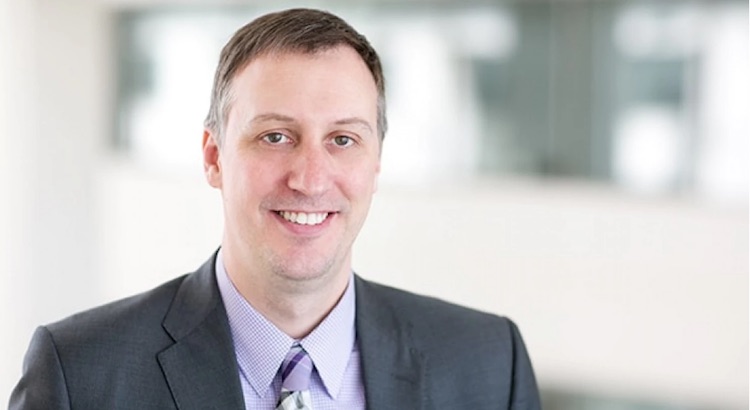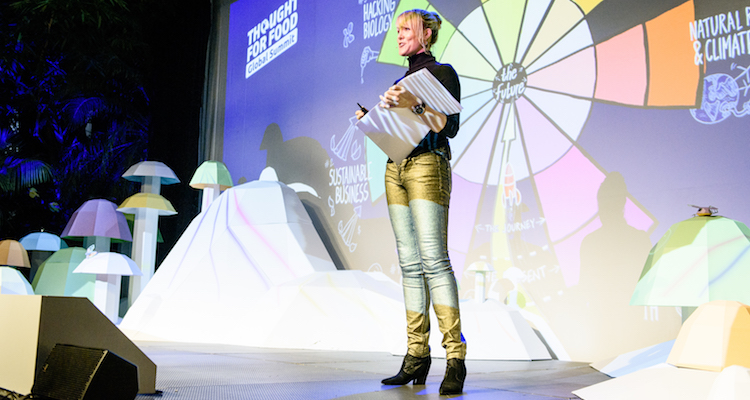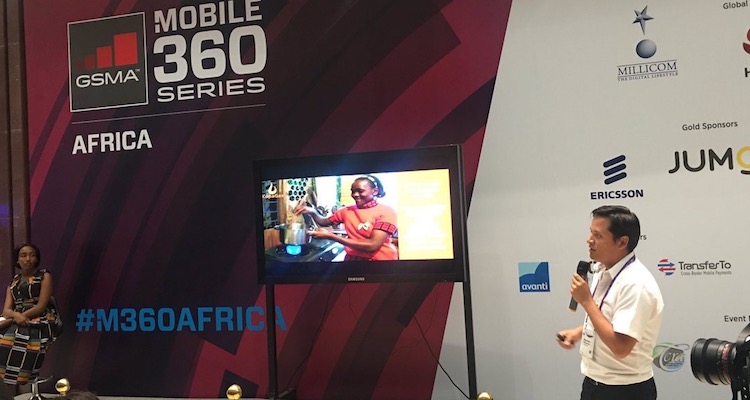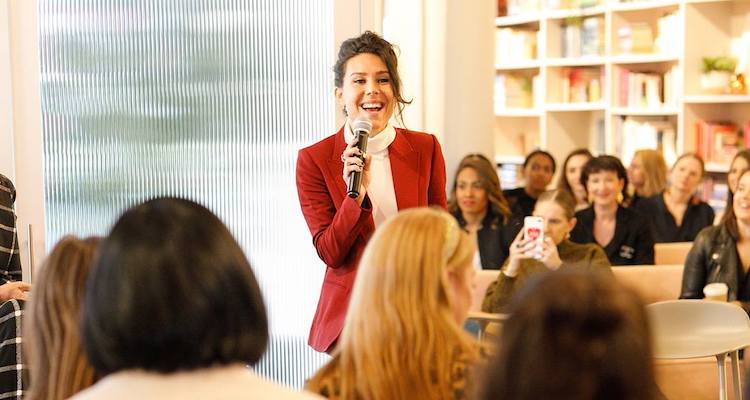Listen Now
For most of us seeking to innovate in the social sector, solving existing problems in new ways is accomplished by bringing technologies or processes from other sectors to bear on the problems faced by the vulnerable. However, innovators are sometimes also true inventors – devising first of their kind solutions for today’s most pressing problems. In these cases, it is not uncommon for the inventor to seek protection for the unique intellectual property contained in their ideas. After all, what benefits those in need may also turn out to be something that is also extremely useful for those with greater levels of disposable income. Patents are one type of protection that are recognized around the world and, assuming you have the financial and legal resources, enforceable. Enter the US Patent and Trademark Office. Since 2012, the USPTO has given awards to businesses, universities, and non-profits using patented technology to aid the less fortunate. My guest for the 173rd Terms of Reference Podcast is Edward Elliot who manages the Patents for Humanity program. For those inventors out there, you’re going to find this conversation extremely useful and potentially rewarding. For the rest of us Aidpreneurs, our conversation is a fun and surprising discussion about past awardees and the massive impact they’ve had on global issues. You can connect with Edward here: https://www.linkedin.com/in/eelliott/
IN TOR 173 YOU’LL LEARN ABOUT
- USPTO’s Patents for Humanity program, recognizing intellectual property rights efforts in the Aid & Development sector
- How a healthy intellectual property framework helps deliver technological innovation in underserved places
- The importance of private and corporate support for development innovation
- How to give inventors the importance and recognition they deserve
- How to apply for Patents for Humanity
OUR CONVERSATION FEATURES THE FOLLOWING
Names:
- US Patents and Trademark Office (USPTO)
- Patents for Humanity
- US Food and Drug Administration FDA)
- Case Western Reserve University
- Golden Rice
- Gilead Sciences
- Procter & Gamble (P&G)
- Karo Solar Lightbulbs
- American Standard
- US Department of Energy
- US National Oceanic and Atmospheric Administration (NOAA)
- US Centers for Disease Control (CDC)
- US Department of Agriculture
Topics:
- Patents, Intellectual Property Rights
- Medicine, Sanitation, Clean Water, Purification
- Vaccines
- Meningitis
- Malaria
- Detection, Blood Sampling
- Nutrition, Vitamin Deficiency, Vitamin A
- HIV
- Solar Lightbulbs, Kerosene consumption reduction, Fumes
- Latrines
- Women, Rights, Empowerment
Places:
- Southeast Asia
EPISODE CRIB NOTES
Download an automated transcript. (02:52) Yeah, so the program that we run here at the Patent and Trademark Office is to recognize inventors, innovators, people in your audience who are using technology to less fortunate around the world. So, we here in developed countries take for granted that innovation is a process that happens and it gets new technologies to market and it improves all our lives, there’s very good mechanisms to do that in the US and most of your European and advanced economies. But in other parts of the world and it’s not so easy where the market structures are lacking and can be difficult to get those technologies out there. And so, our program is to reward those who are overcoming those challenges and who are getting technologies out there to help people with issues such as medicines, clean water, sanitation just sort of basic humanitarian needs that we take for granted and don’t have to worry about in our day to day lives. (03:52) Well, so it was not originally my idea but I came to office in 2010 and it was the first project that was handed to me and it was basically an idea at that point. And said hey we’d like to do something with humanitarian technologies and helping the patent community who are working on those. So, there wasn’t much to it but they gave it to me and I took the reins and we spent about a year just developing the program talking to different groups, talking to different companies and nonprofits to universities, anybody who works in the innovation community and people who work with the developing world as well, got a lot of input and a lot of great ideas and we’re able to structure this program out of that. (04:35) Yeah! So, people are interested that can apply on their own behalf. You do have a US patent or patent application in order to qualify. It could be a patent that you own or it could be a patent that you license so you don’t have to actually, have a patent to do it but it has to be some patent that covers the technology that you’re using. And you know, we recognize that there are other uses of non-patented technology being used for humanitarian purposes but just falls a little bit outside of our mission here at the US Patent and Trademark Office So, for now we’re focused on the patented technologies. (05:20) You know we do run into especially, individual inventors all the time for whom funds are always tight but we always try to refer them to resources that may help. There’s a pro bono program for inventors who can’t afford the legal fees to obtain patents. Our office doesn’t run that program but we coordinate with various bar organizations around the country who do so. Sometimes we refer people to that program. I will say typically we haven’t had to turn any away so far, which is great because of those issues. Usually by the time people get to the point that they’re actually getting their technology out there to help people in developing countries, it’s several years after they first developed it and by that point they’ve been able to get their patent. (06:24) Yeah, definitely! So, I’ll start with the Food and Drug Administration’s because you mentioned them and like you said a lot of people may be surprised. But they do have a lot of research scientists on their staff and for this particular award those scientists had worked on developing an improved meningitis vaccine. So, meningitis is an issue that affects a lot of Central Africa a number of countries in there and hundreds of millions of people used to suffer from it. And making the vaccines so that was very difficult because they were difficult to manufacture and they had to be kept at a certain temperature and it was just hard to get them out there to people without the infrastructure in those countries So, the FDA worked on an improved process for creating a better vaccine like withstand two conditions out in the field and it’s been used to immunize over 235 million people in African countries so helped a lot of people out there. All our winners have great stories but another one that I’ll talk about just from last year. So, Case Western Reserve University they have a medical research program there and one of the things they wanted to address was malaria detection and I think most listeners probably realize that malaria is a problem in developing countries around the world but they may not realize that it’s difficult to detect when you actually have malaria. The standard test you have to take blood samples and send them off to a lab and there have to be microscope tests. It’s a long-complicated process that requires a lot of infrastructure. What they’ve done at Case Western Reserve is created a malaria detection device that’s very quick and simple it just takes a drop of blood like from a finger prick and it uses magnets and lasers that’s about the extent of my technical knowledge on the subjects. (08:04) That’s right so what it does is it actually detects. It uses magnets and lasers to detect the byproducts of the malaria parasite which leaves some iron-based residue in the blood and so this device can detect that residue very quickly. So, what it does allows is screening large populations to detect there’s people who have malaria and may not show symptoms but who are carriers of the disease and can affect others. (08:38) Yeah, so we have an award ceremony as you said. There’s the honorary portion, which is just recognition for their accomplishments and we host a ceremony here in the DC area and invite the winners to come and tell their stories and receive their awards. And we try to put out information about that to let the wider community know and then in addition to the honorary parts they receive a certificate for acceleration at the US Patent Trademark Office. So, one of their other patent matters you know by the time they win the award they’ve already got the patent on a humanitarian technology but on one of their other patents that’s in the pipeline they can accelerate it through the line more quickly. (09:25) Exactly and that’s the hook behind the program they give companies and value for the good work they’re doing. (09:40) It’s usually been in the dozens range. I think our average is somewhere around forty to fifty but those are very high quality applications. And there there’s a lot of work that people have to do just to get to the point they’re ready to apply because we’re looking not just for the technology itself well how is it being used what is it out there in the world doing it has to go beyond the invention conception stage and it has to get out there to where it’s actually helping people. (10:13) Yeah, so the criteria are pretty open-ended but we’re just looking for you to demonstrate some sort of contribution that you’ve made so this wasn’t an accidental occurrence but you actually tried to use your technology to help the less fortunate around the world. And then as you said the impact is the other portion of it so what has been the result of your actions and it’s a bit flexible you know most of our winners are actually out there being used to help people around the world but some of them are a little earlier stage in the pipeline. So far, instance Golden Rice won the award in 2015 and what they have done is they created a strain of rice that’s fortified with vitamin A so the people in poor areas who mainly whose diet mainly consists of rice don’t suffer from all the medical problems you get from lack of vitamin A. And they’ve been working since 2000s to make it freely available for farmers around the world to grow and to cultivate and to feed people. Of course, there’s been a lot of regulatory hurdles for them to get through to introduce this in various countries and so they’re gone to a number of field trials in Southeast Asian countries and you know the product is just kind of now getting to the point where it’s starting to filter out into the population. (11:58) So, the way we structured our program, the judging considerations are financially neutral which means we don’t take into account whether you’re giving it away or selling it all that we look for is that it’s reaching the people in need So, some of our winners are doing this as charitable work and basically subsidizing it with their other business operations but some of our winners their primary market is people in the developing world And they found a way to sell at an affordable price to them and still make money for their own company So, we don’t take that into consideration we just try to look at the end result of is this reaching people and improving their lives. (12:51) you know it’s hard to pick out just one because a lot of our winners have such a huge global impact. So, for instance one of our first group in 2013 Gilead Sciences won an award for their HIV drugs and they set up a network using generics manufacturers in India and Asia to manufacture the drugs at low cost and sell them throughout the world And I think the latest numbers I saw I want to say close to half of people in the developing world who are on HIV medicine are taking Gilead drugs. So, we’re talking you know hundreds of millions of people around the world are benefiting from this the FDA award-winner that we mentioned before. You know over 200 million people have been immunized against meningitis. I think Proctor and Gamble is another great winner from our first round of the program and they make a little chemical packet it’s about the size of a business card and you dump it into dirty water and it can purify. I believe it’s five litres of water per packet and you just dump it in you swirl it around for about a minute or so and all the particulates and bad stuff kind of settles out to the bottom and then you have clean drinking water to drink. And Procter & Gamble has distributed those packets around the world and they’ve purified over 7 billion litres of water worldwide so some of the numbers are just staggering. (14:26) Yeah, I mean I’m always blown away by the creativity and innovation some of our winners. Show one that comes to mind from the first round of the program. There’s a small company called karo that operates out of Colorado and they sell solar light bulbs for use in developing world and you might think why do you know people in Africa need solar light bulbs? Well because a lot of parts of the world they burn kerosene in their homes for light after dark and it’s a very poor source of light so it damages their eyes, they inhale the fumes and it causes lung damage problems with breathing. And it’s a fire hazard lots of people you know die every year from fires that are caused by these kerosene lamps. And so okaro is delivering these solar bulbs to people. And even though people who purchase them you know don’t make much income they can spend about a third of their income just buying kerosene and they purchased these solar light bulbs and after three or four months it pays for itself. They’ve recovered the cost of not having to buy kerosene anymore and it’s a cleaner better source of light that avoids all the health issues with kerosene. So that’s one example that comes to mind. Another one that was surprising to me is American Standard which is a US plumbing company. They have developed these latrine pans. They just they’ve distributed over 700,000 of them around the world in Africa and Asia and was just a little pan that people can put their waste in and it seals it up so that insects can’t get in spread disease from the waste and it’s an issue that you know I never even can until saw their. (16:07) Yeah, you know a lot of times it really starts with the inventors. You know they have a lot of very smart researchers that these company is working on their products and sometimes they just get a really good idea that they think could help people. And they’re usually the ones who start with the idea and come to management with it but that of course it takes an effort from the entire company to develop that idea and run with it. And get it to market and get it out to help people so it’s really encouraging to see all the people that jump on board to support these great ideas. (16:59) Yeah, so as far as our application standards go, the only reason we reject an application is if it contains profanity or inappropriate material. So, other than that we pass it on through to our judges. And I’ll talk a bit about the judging process. So, the judging process occurs outside of the USPTO. We have volunteers mainly from academia both professors and technology transfer professionals. So, people who work in the patent offices of universities and are used to dealing with a lot of technologies these people volunteer their time and they sort through the applications review them all and give them scores based on you know how well they’ve answered our questions and demonstrated the things that we’re looking for that process. We take the highest-scoring applications and that goes to then a second round. The second round of judging we have volunteers from different federal science agencies so from places like Department of Energy NOAA FDA the Centers for Disease Control Department of Agriculture. All these people, all these agencies contribute their people to form a review committee and take the highest applications from the first round and make rec nations on awards so most of the decision-making is out of the USPTO hands. (18:39) It’s difficult to say because we have so many different award winners across so many different types of technologies and so many different categories I’m not aware of one that’s you know replaced everything else and becomes a standard in the field but that’s because our winners are addressing so many different challenges out there. And one thing that we found that there’s no one-size-fits-all solution. What works for one problem in one field doesn’t necessarily work for another technology in a different field and there can even be differences across countries you could have a solution that works well in parts of Asia but doesn’t work in parts of Africa. I mean you’ve got cultural acceptance is one of the factors that goes into how successful these technologies are. You know you have to have buy-in and the people have to know you understand the technology and it has to improve their lives. So, one of the stories that I’ve heard this isn’t from our program but at a conference I was talking to somebody about building water supplies for four villages in parts of Africa and what they had done was normally the women would have to walk five to ten miles away to the nearest water source to collect the water for the day and then carry it back to the village. And so, these well-meaning volunteers had created a water purification device within the village there where they could just get their water from within the village and not have to do the long trek every day. And what they found was that villagers weren’t using it. The women were still going five to ten miles away to get their water and they couldn’t figure out why until they started talking to the villagers. And the women told them that they liked having the time away because they could when they’re going to collect their water it was a time for them to chat and catch up and you know it was a break for them from their other chores. So, it actually preferred the longer solution versus the quick and local solutions. (20:47) Yeah you know I think we’ve had good applications in the past in a lot of the traditional humanitarian areas. So, areas of health clean water nutrition I think people really understand how those inventions apply to helping the less fortunate. I think we would like to see better participation from the high-tech industry and especially in software there’s a lot of potential there as mobile phone penetration increases. I think penetration in Africa is even higher than in the US. Most people over there you know they don’t have access to additional phone lines and so they’ve skipped that whole generation of technology and gone straight to mobile phones. So, I think there’s a lot of room for really creative technologies that could improve their lives in terms of helping with literacy helping with education helping them find better markets where they can get a better price for their crops and improve their standard of living. One of the categories that we have in the program is standards of living and we would definitely like to see more of those types of technologies come in but so far, we haven’t seen a whole lot of them. (21.46) So, the categories we have are medicine which is for any sort of medical technology not just drugs and vaccines but also medical devices and equipment and testing. We have sanitation which is for clean water and other removing other contaminants from people’s environments. Energy is a big one helping people who don’t have access to an electric grid have sources of heat and light and for their homes, Nutrition for helping people get better crops and more nutritious food supplies And then finally living standards which is meant to catch improvements such as literacy education and anything that helps people have a better standard of living. (22:29) Yes, the deadline is coming up soon its December 8th but the news is that there’s still plenty of time to apply. The application is on our website and it’s very easy. It’s very simple to fill out. We’ve had people who have fill out the application in one evening and sent it off and won awards through the program. So we encourage all your listeners to look into it and take the time to apply. (22:53) Yes, that’s right you can just go to USPTO gov slash patents for Humanity all one word and I’ll redirect you to the current page. (23:32) So as far as patent and IP issues we have a very good news feed within the office that scours all the different publication sources both media sources and blogs and anything in patent community and kind of collects the best stories for us and brings them to our attention. So, we’re very fortunate to have that service in terms of more related to this program and information with a developing world. I typically you know so many different sources out there a lot of it just comes from talking to different people who are involved in the field. I have a lot of good contacts I’ve built up through the years of working on this program and they’re always very knowledgeable and able to point me in the right direction when something new comes along. (24.28) So, it varies every year but we’re trying to move to a more regular schedule. So, I would look around the same time next fall but the latest information is always available on our website. If you go to uspto.gov. I’ll always tell you when the next round is coming up.Please share and participate
If you have any questions you’d like to ask me or Edward directly, head on over to the Ask Stephen section. Don’t be shy! Every question is important and I answer every single one. And, if you truly enjoyed this episode and want to make sure others know about it, please share it now:[feather_share show=”facebook, twitter, linkedin, google_plus” hide=”reddit, pinterest, tumblr, mail”]
Also, ratings and reviews on iTunes are very helpful. Please take a moment to leave an honest review for The TOR Podcast!




